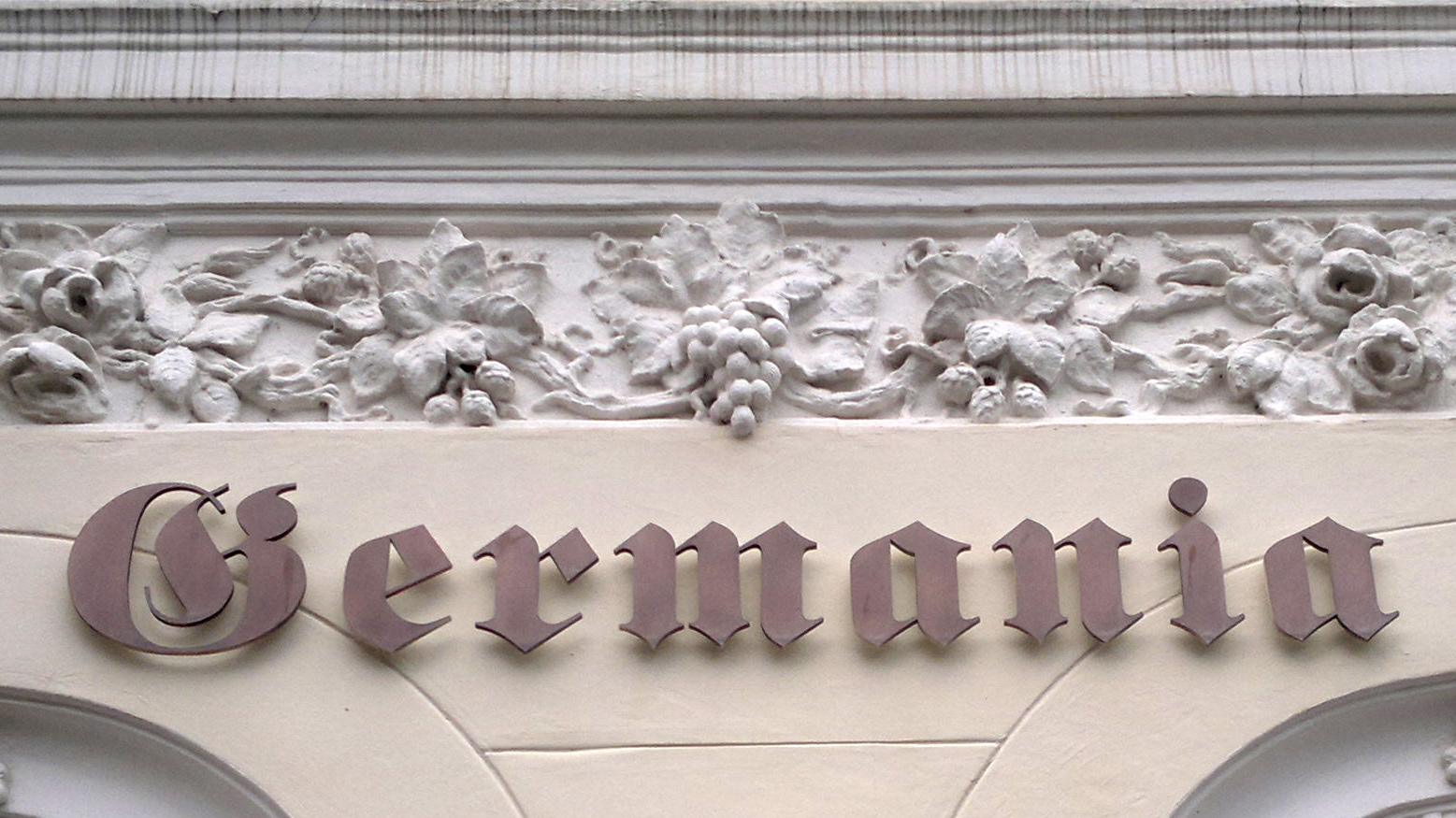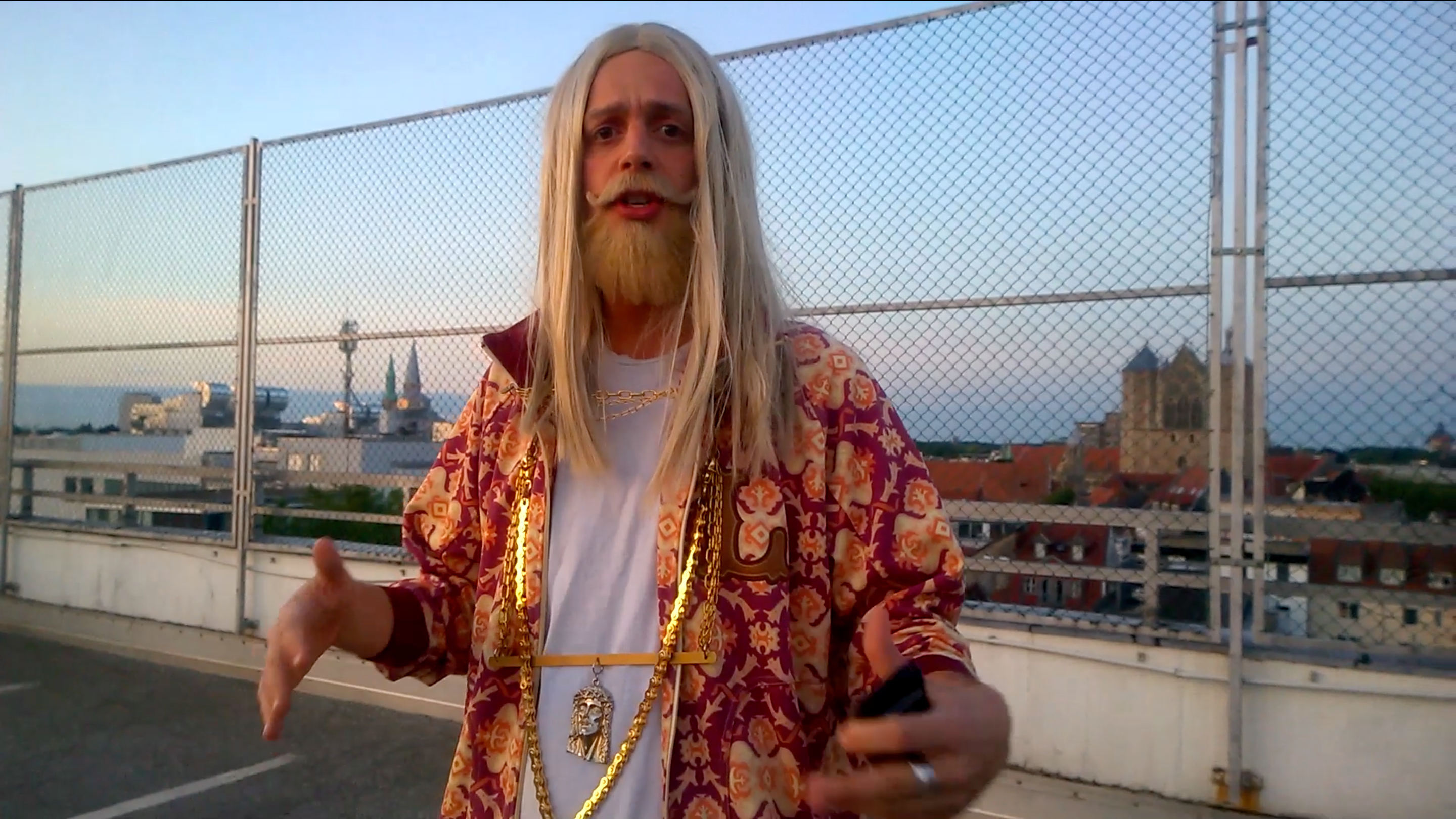An ongoing interest in my work is the role of the shaman, and his or her connection to primordial, creative forces that lie beyond the pale of society and civilisation. An outcast figure inhabiting the fringes, the shaman is a vital character, feared and respected, whose very peripheral role plays a role in defining the identity of the tribe – what lies within the circle, and what lies without.
I imagine the role of this shaman to be performative. It is a character that has been with me in one form or other since at least 2007, from when I have the first photographic evidence for his existence. In this guise he appeared as a figure in a cautionary moral tale, an exhortation to eschew the corrupting influence of greed.
"Money, or Tarred and Feathered", 2007. Photography by Catherine Camp.
Especially after moving to Germany, I became increasingly interested in the traditions and history of the country.
Psychosocial traumas of the past – scars afflicting victims and victimisers alike – have been dealt with unsatisfactorily, finding redress in measures which, in their political, economic and educational dimensions, ignore or purposefully avoid the question of healing.
Perhaps confidence in the ways of the past and the knowledge this could potentially bring to bear on the present situation is so eroded that healing in anything other than a purely statistical sense cannot occur. This is where the shaman comes in.
"The Shaman", 2015. Photography by Matt Cowan.
After becoming interested in the phenomenon of “Animal trials”, I was able to find and purchase a 1927 German reprint of a Benedictine text on exorcism. The shaman is armed with this text, as well as a few other essential accoutrements: a bottle of Kornschnapps, a wand, and material with which to start a fire. he is close to alchemy and the blending of the elements. In his own flawed way he tries to achieve healing through connection with the land.
An original, primordial knowledge has been lost, if it even existed in the first place. The performative act is an attempt to manifest, first through imitation and later through creative innovation, a truth and connectedness that cuts through our current relationship to tradition.









